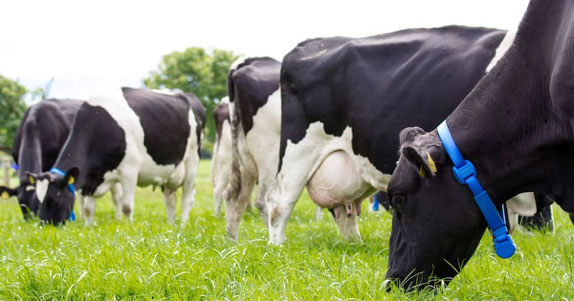Precision farming and animal health and welfare – is this just cutting out the people?
Terminology like digitalisation and precision farming may sound futuristic and make people think of farming systems where everything is done by machines, but that is not the case. Precision farming is actually about finding ways to help make the farmer’s job easier and more precise, through the use of technology available.
From the outset the entire theory of precision livestock farming is based on improving and optimising the different procedures that the farmer goes through every day. This includes a number of different elements such as paying attention to the health and welfare of the animals, monitoring resource use and productivity, etc. It also allows for data collection and sharing. This is one reason why EU farmers and partners adhere to the EU Code of Conduct on Agricultural Data Sharing.
Emerging smart technology has the potential to improve the farmer’s ability to spot and treat animal illness before it becomes a full-blown outbreak that can cost the lives of hundreds of animals, and completely devastate a farmer’s livelihood. Use of smart technology creates a potential for spotting early signs of illness.Through continuous livestock monitoring veterinarians and farmers have real-time info at their fingertips, allowing them to take action to keep diseases away from farms and from the food supply.

New technologies could also allow farmers to maximise the efficient use of feed and other resources to avoid waste and limit the herd’s carbon footprint.
Most importantly though, precision farming can help uphold welfare standards by measuring animals’ vital signs consistently and objectively throughout their entire lives to pick up on the first sign of any change. Researchers at KU Leuven in Belgium, for example, have developed a microphone and algorithm system using sound monitoring and analysing technology that is able to identify the sound of a pig coughing distinct from all other noises. Another example is the early detection of lameness through video analysis. As an early warning system, this means farmers and veterinarians can intervene sooner and reduce the animal’s risk of suffering from a serious, prolonged illness and reduce the eventual use of antibiotics.
The connectivity of devices allows the system to be set up to send alerts to farmers and veterinarians either by SMS, through a web-based app or on a digital dashboard, instantly notifying them of a potential underlying health issue. And in future, the technology could also be connected to a climate controller to adapt the conditions as part of a therapeutic response to a health problem. This is why it is also important that all farmers get access to broadband internet in Europe!